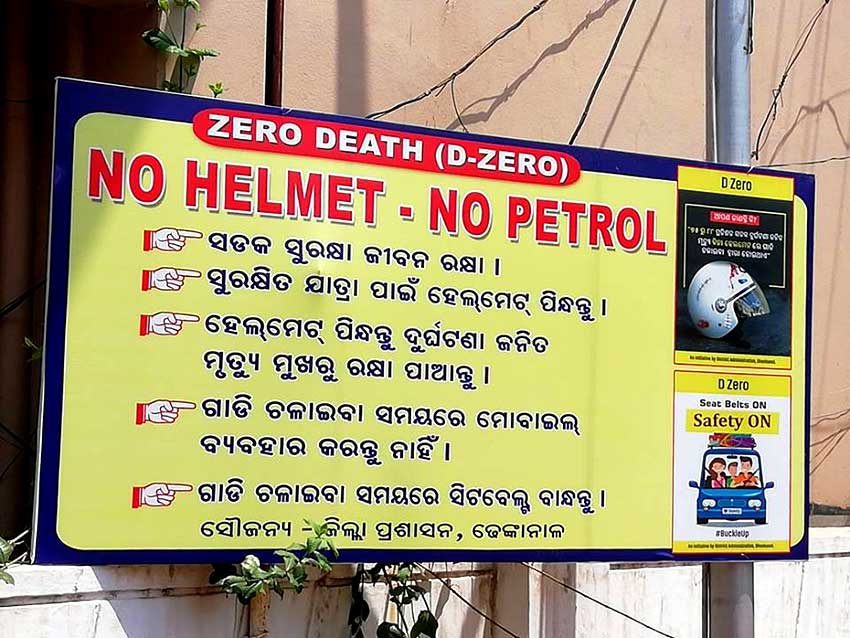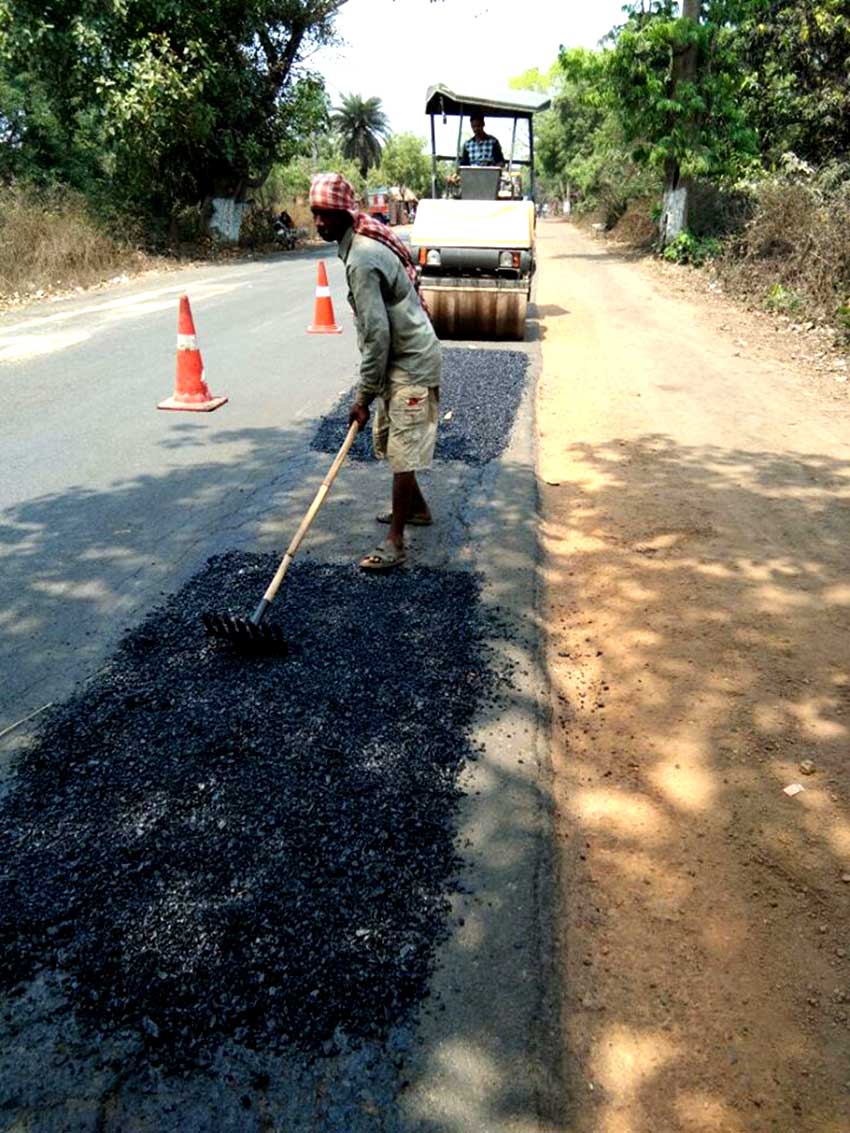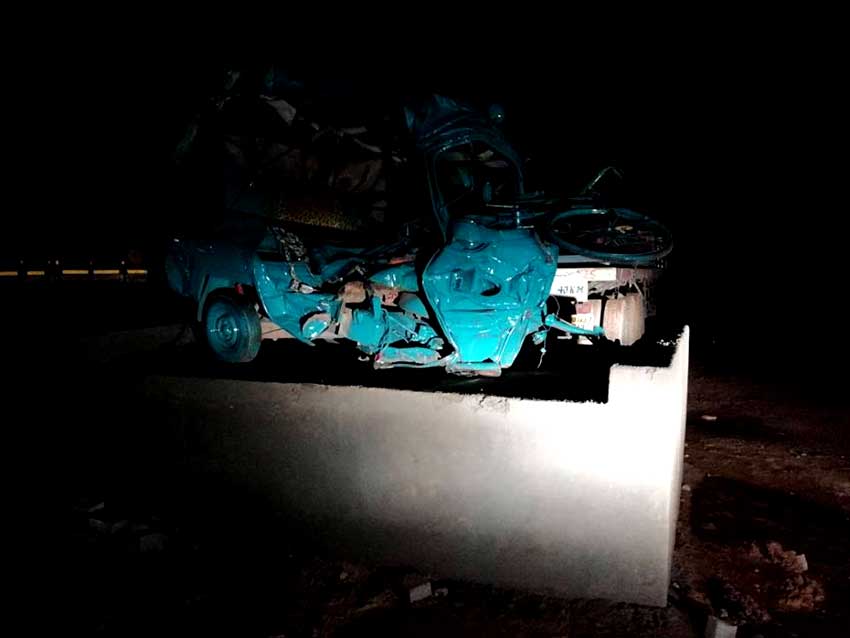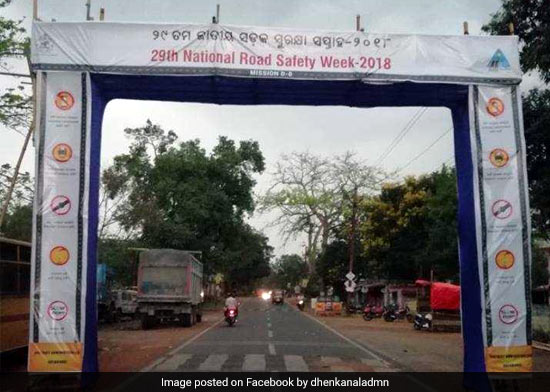
No Helmet, No Petrol: Here’s How A Small District In Odisha Is Aiming For Zero Road Accident Deaths
Mumbai: Centrally located on the geo-political map of Odisha, the Dhenkanal district is hoping to eliminate the road accident deaths completely by next year. In order to achieve that the administration commenced a district wide awareness programme on the first day of the ongoing National Road Safety Week (April 23-30). The Dhenkanal district administration has chalked out a five-point agenda campaign titled ‘D Zero’ (Death Zero) to cover every aspect related to road accident prevention and education.
#1 No Petrol, No Helmet From May
 Starting May 1, if any two-wheeler driver visits a petrol pump/station without a helmet he/she will not receive petrol or any types of vehicle service. This rule has been implemented to ensure the safety of two-wheeler drivers. “Though helmets are mandatory and the most basic means to avoid serious injuries, people do not wear them. Helmets are often treated as uncool. It is unfortunate that we have to come up with such stringent steps to remind people of their own well-being,” says Abanikanta Patnaik, Additional District Magistrate, Dhenkanal.
Starting May 1, if any two-wheeler driver visits a petrol pump/station without a helmet he/she will not receive petrol or any types of vehicle service. This rule has been implemented to ensure the safety of two-wheeler drivers. “Though helmets are mandatory and the most basic means to avoid serious injuries, people do not wear them. Helmets are often treated as uncool. It is unfortunate that we have to come up with such stringent steps to remind people of their own well-being,” says Abanikanta Patnaik, Additional District Magistrate, Dhenkanal.
This policy is slowly spreading across the country. Regions in India including Andhra Pradesh, Hubballi, Visakhapatnam have already implemented the ‘no helmet, no petrol’ rule.
#2 Safety Most Crucial On National Highway
 The District is situated on the Cuttack-Sambalpur road (NH 55) that serves as a connecting road to other districts and villages. Repair works that are pending on NH 55 has now been taken up at a full pace. “Irregular roads or roads that are dug that lead to national highways makes driving difficult. We have procured a Police Control Room (PCR) Patrolling van that will regularly monitor repair works pending for a long time,” adds Mr Patnaik. PCR patrolling van will be inaugurated on April 29.
The District is situated on the Cuttack-Sambalpur road (NH 55) that serves as a connecting road to other districts and villages. Repair works that are pending on NH 55 has now been taken up at a full pace. “Irregular roads or roads that are dug that lead to national highways makes driving difficult. We have procured a Police Control Room (PCR) Patrolling van that will regularly monitor repair works pending for a long time,” adds Mr Patnaik. PCR patrolling van will be inaugurated on April 29.
#3 Call Centre and ‘CallAmbulance’ Smart Phone App
To cater to the tech-savvy generation and to ease the formalities during road mishaps, the district administration will launch Call Centre services and the ‘CallAmbulance’ App. The Call Centre number will be circulated and a demonstration on how to use the app will also be given during the various awareness campaigns that will take place till the end of this week. People can make calls to know everything related to road safety and what to do in case of an accidents – dos and don’ts, first aid and other procedural matters.
#4Quirky Messaging To Attract Maximum Attention
‘After Whisky, Driving Risky,’ ‘Wearing Helmets Are The New Cool’, ‘Seat Belts On, Safety On’ are some of the hoardings that will be placed in every part of the district. Barricades will also be renewed and painted with attractive messages. These posters and barricades will serve as a constant reminder to people, believes Mr Patnaik.
 Vehicles damaged in road mishaps and old vehicles will be kept for display at accident prone areas, to remind people of the consequences of not being careful on the roads.
Vehicles damaged in road mishaps and old vehicles will be kept for display at accident prone areas, to remind people of the consequences of not being careful on the roads.
#5 5,000 Young People To Be Roped In For Road Safety Campaign
Fast and furious is how the youth like it. So tapping them to not just educate but also convey the road safety message is an essential part of the campaign. “Inspired by action movies and stunts, young adults often avoid safety instructions taught to them in the license acquiring procedure. Thus, the only way to ensure they take road safety seriously, college students will be involved in our campaign,” says Mr Patnaik.
 Starting from April 27, atleast 5,000 youths will also be given First Responder training. They will work with Emergency Medical Technicians (EMTs) and paramedics to provide basic medical care in an emergency. This training will prepare the students to handle a road accident situation. The students will be trained for a period of six months.
Starting from April 27, atleast 5,000 youths will also be given First Responder training. They will work with Emergency Medical Technicians (EMTs) and paramedics to provide basic medical care in an emergency. This training will prepare the students to handle a road accident situation. The students will be trained for a period of six months.
Our district’s literacy rate is over 70 per cent and yet people are ignorant about the basic Dos and Don’ts of road safety that eventually lead to accidents and deaths. The first step is to inculcate basic knowledge of traffic in people. And once the education starts penetrating, it needs to be backed up by a robust infrastructure and facilities. The five-point agenda has been planned in accordance with awareness and its sustenance.

















